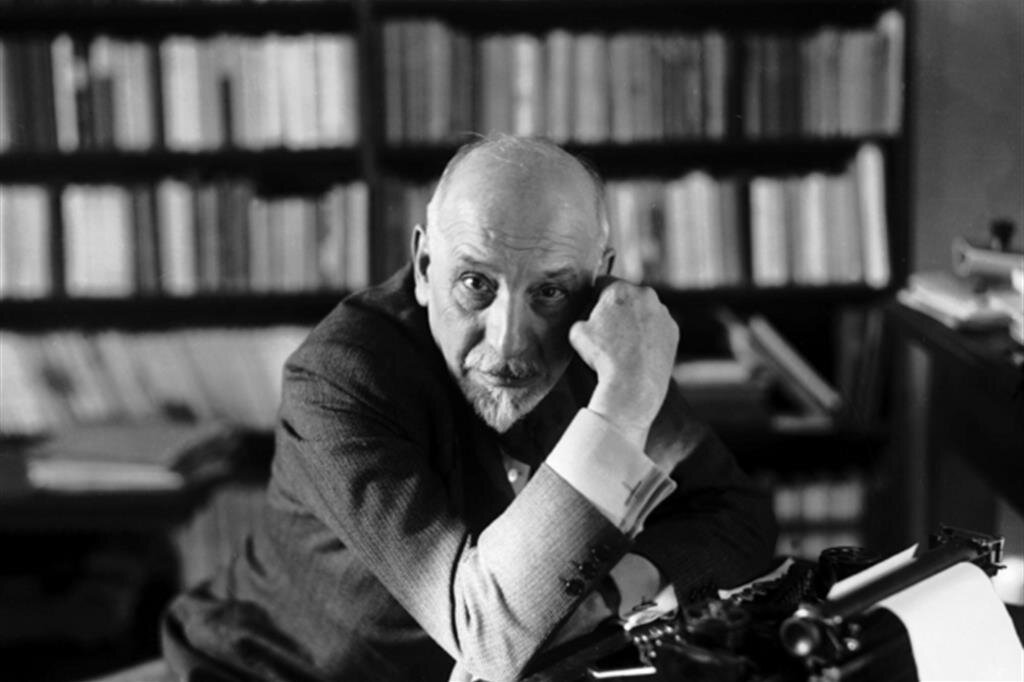What do Pirandello, math and a river have in common? - Part 3
Here we are with the last (but not least) post of the series. However, before continuing, be sure not to miss the first post (here), where I have already answered the question in the title, and the second post (here).
At the end of the previous post, I said that chaos could also refer to the discomfort and the inner conflict that humanity experienced in the early decades of the twentieth century. This inner conflict is well explained by Luigi Pirandello in one of his most famous plays called “Sei personaggi in cerca d’autore” (Six characters in search of an author).
Pirandello, the chaos and the mask
Luigi Pirandello was a prominent personality in the Italian literary landscape of the early 900. In 1934, Pirandello won the Nobel Prize for literature thanks to “his courage and ingenious portrayal of the dramatic and theatrical arts”. In addition, his works strongly influenced and contributed to the idea that, in the first decades of 1900, the man was suffering the restlessness of who tries in vain to rebel against the schemes of a society with no ideals. The inner conflict created by the inability to communicate produced characters and events wrapped in chaos. Pirandello defined himself as the “son of chaos” since he was born in 1867 in a countryside district near Agrigento called Caos.
This really curious biographical data allows us to introduce his vision of the world characterized by the disorder due to a "tragic conflict between the life that continuously moves and changes and the form that fixes it, unchangeable", as Pirandello himself argues in the preface of "Six characters in search of an author".
At the base of his vision of the world, there is therefore a vitalistic conception connected to that of various contemporary philosophies (in particular to the "vital impulse" of Henri Bergson): everything that detaches itself from the incessant becoming of life assumes a distinct and individual ‘form’ and begins, according to Pirandello, to ‘die’. This also happens to our own personal identities: we are not an indistinct part of reality, but we tend to crystallize in individual "forms", in a personality that we wish to be unitary and coherent. In reality, this personality is an illusion and is triggered only by subjective feelings. Others, therefore, perceive us each according to their own perspective, fixing us in certain forms. Each one of these forms is a fictitious construction, a ‘mask’, that we impose on ourselves and that society imposes on us. Under this mask there is not a defined and unchanging personality, but there is an indistinct and incoherent flow of states in constant transformation, a chaos. This shattering of the individual personality causes the loss of all the certainties of its value and consequently a sense of anguish and loneliness.
Six Characters in Search of an Author
The drama, staged for the first time on May 9, 1921 at the Teatro Valle in Rome, aroused numerous criticisms among those who were accustomed to a ‘traditional’ theater because it marks a radical break with the theatrical conventions of the 'nineteenth century. The spectators, upon entering the room, find the curtain raised and the stage without a scene. Initially a stagehand enters and begins to nail some planks of the stage. Then the stage manager arrives and throws him out because the actors have to rehearse a new play: "Il giuoco delle parti" by Pirandello. The actors enter, chatting amongst themselves, and so the rehearsal begins, interrupted by a discussion between the lead actor and the first actor. The spectators initially have the impression not of attending a performance, but of actually catching, as if by mistake, the company rehearsing. Suddenly six figures enter from the back of the room (breaking the conventional barrier between audience and actors), they are the ‘six characters’. They have been conceived by the mind of an author who nevertheless refused to write their play. The six characters therefore turn to the company so that their story can come to life in the theatrical representation.
The drama of the six characters
It is mainly in this play that we can trace the Pirandellian conception of a chaotic and conflictual reality. In the preface we are made aware of the fact that Pirandello, after obsessive inner conflicts, comes to the choice of representing "the case of an author who refuses to let some of his characters live, born alive in his imagination, and the case of these characters who, having now infused life into them, do not resign themselves to remain excluded from the world of art". Pirandello, therefore, wants to stage the impossibility of writing such a drama. This, and not the story, is the true subject of the work.
In this way the characters can try to live their drama in the superior artistic representation, which, they claim, frees them from the ‘form’ in which they are imprisoned and forced to continuously relive their suffering, shame and frustration. This can be understood from the Mother's answer to the stage manager, astonished by the fact that she does not want to stage the incest between the Father and the Daughter despite knowing that it has already happened: "But if it has already happened, excuse me! I don't understand!" and she goes "No, it happens now, it always happens! My torment is not over, sir! I am alive and present, always, in every moment of my torment, which is renewed, alive and present always". Therefore, in the Mother is reflected the concept of a chaotic life that become fixed in a form.
